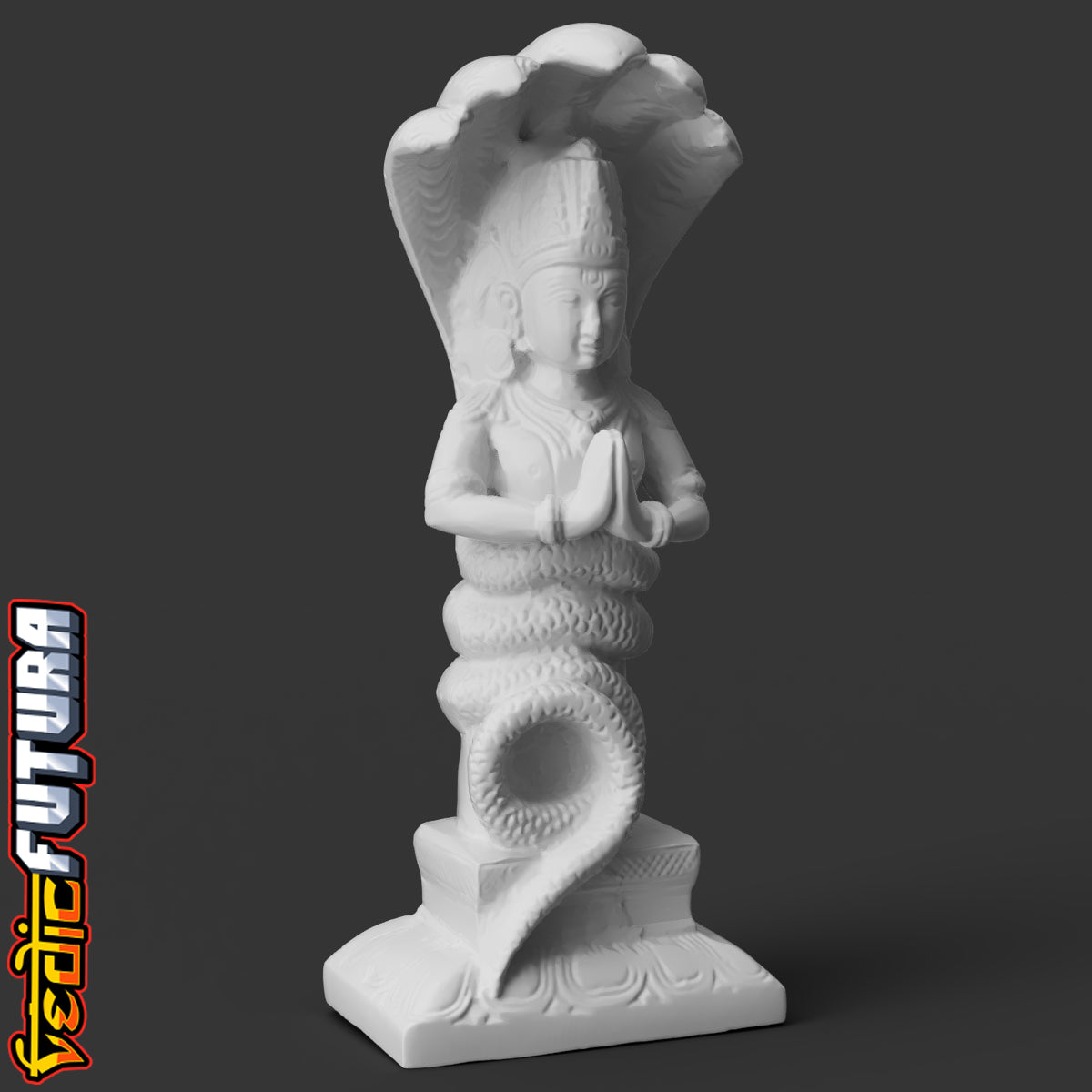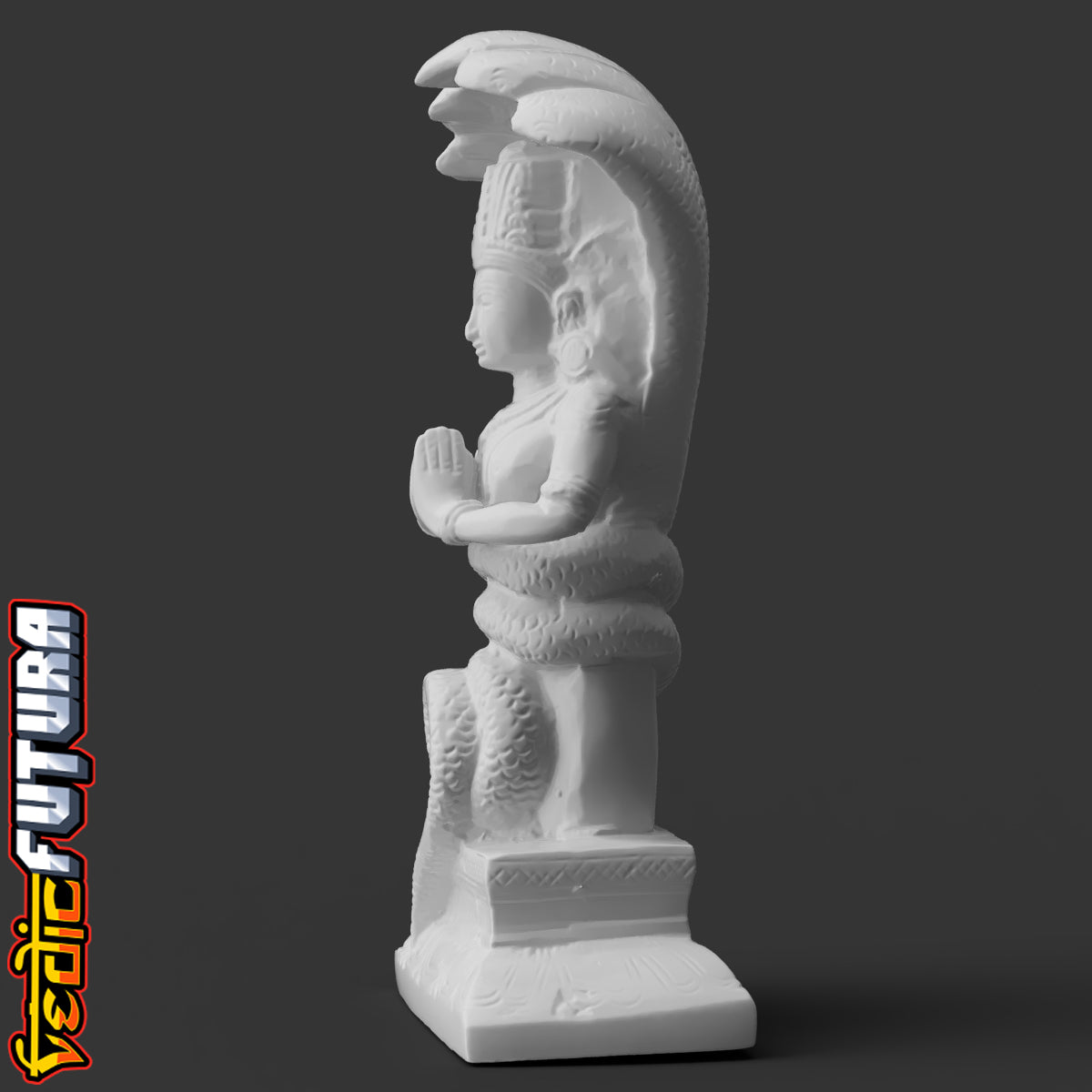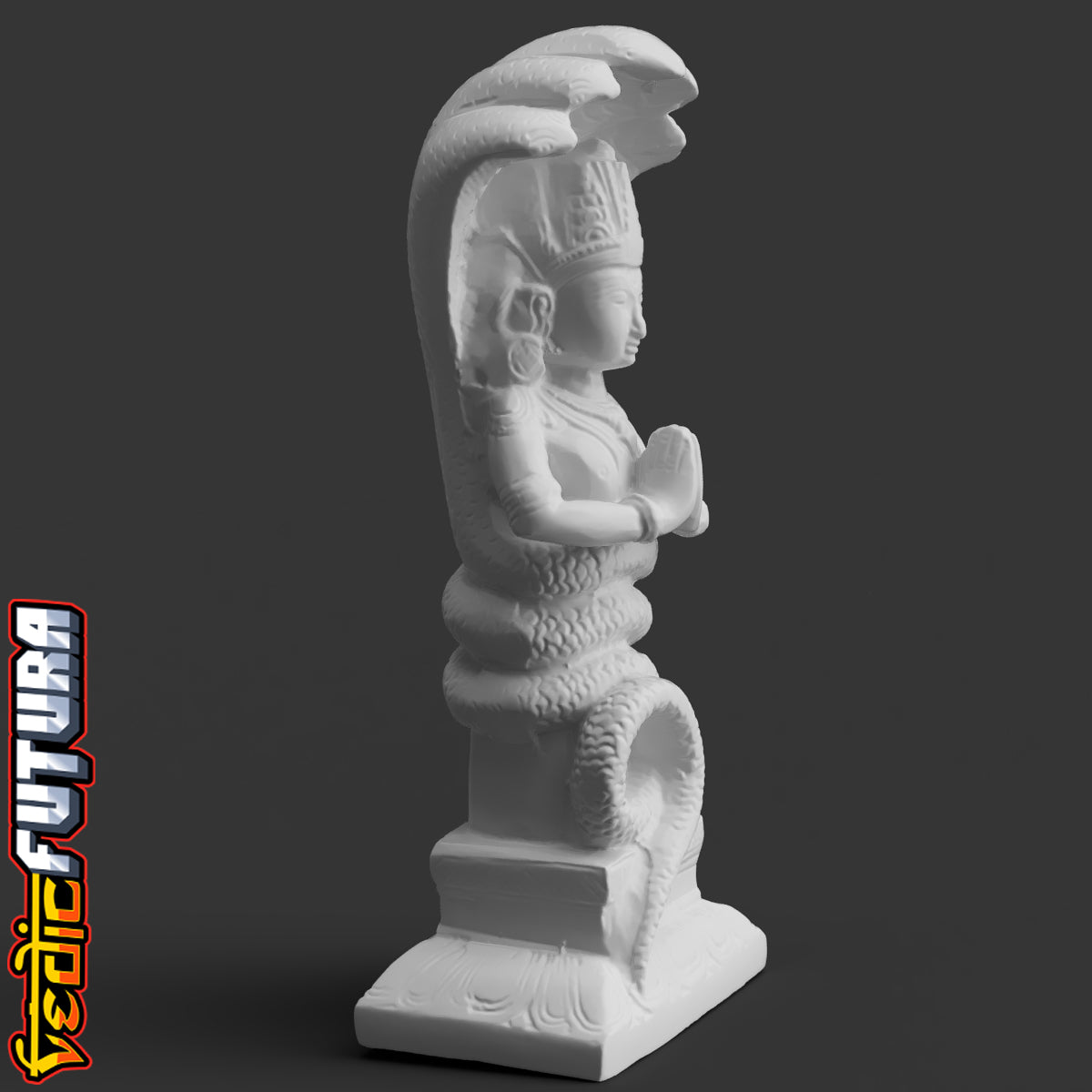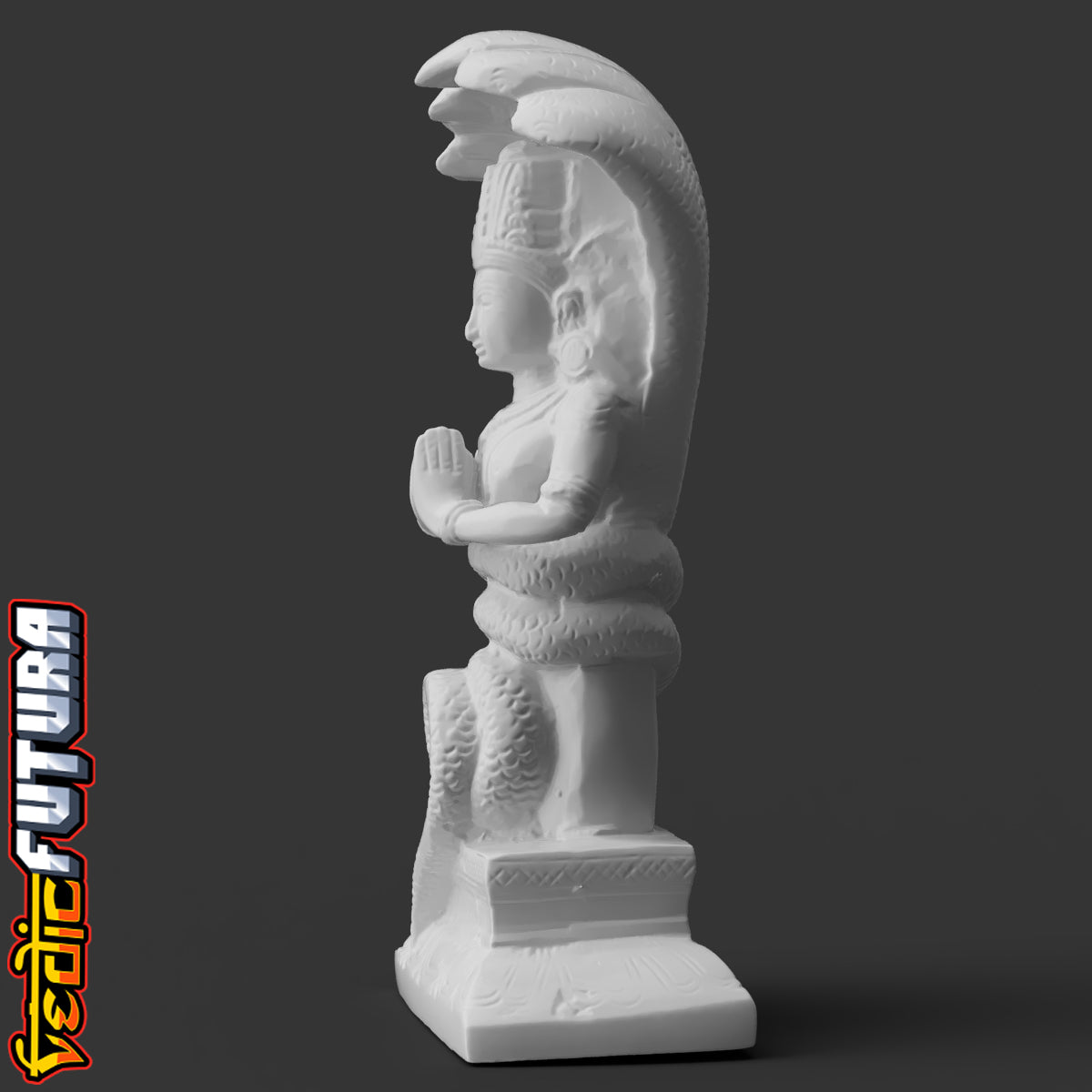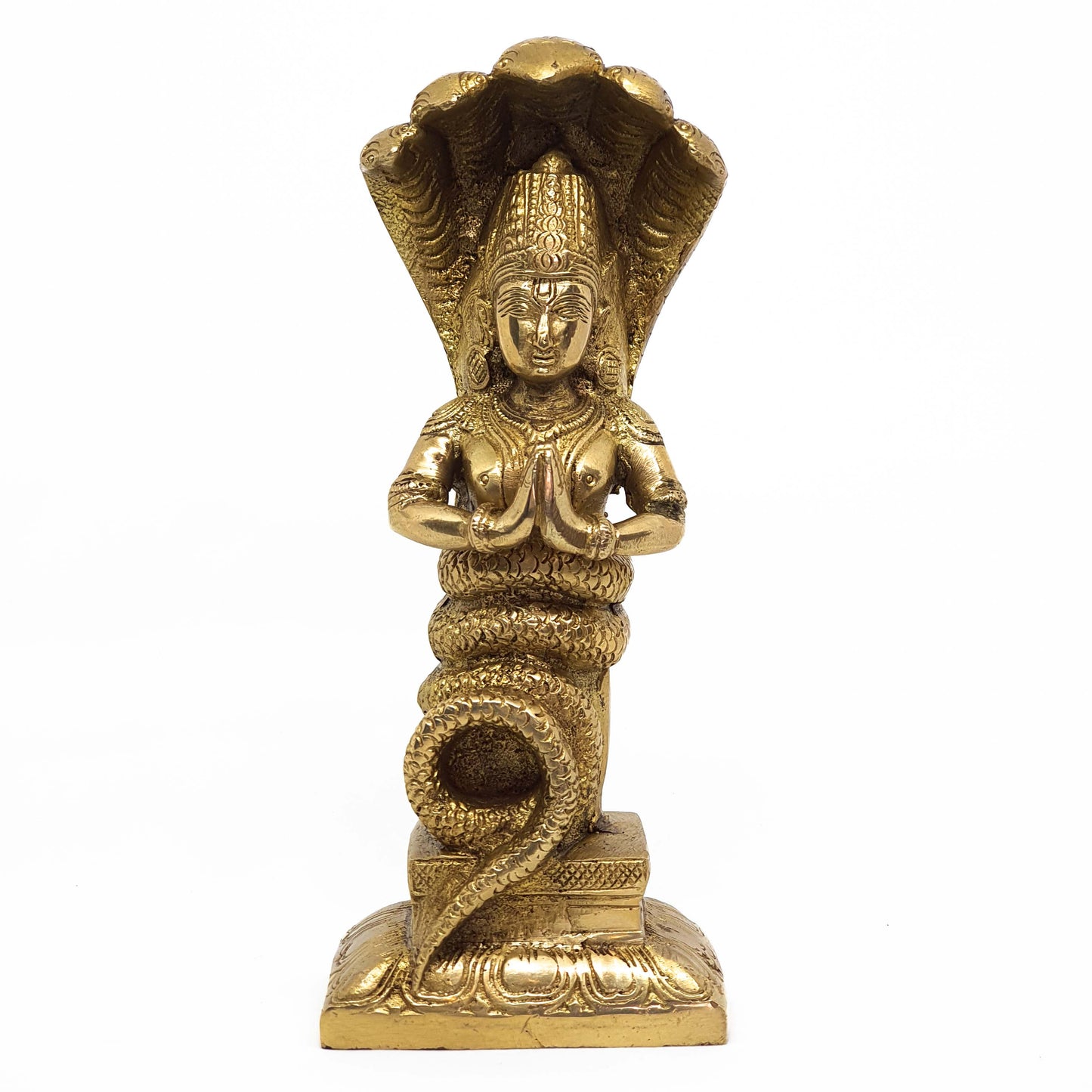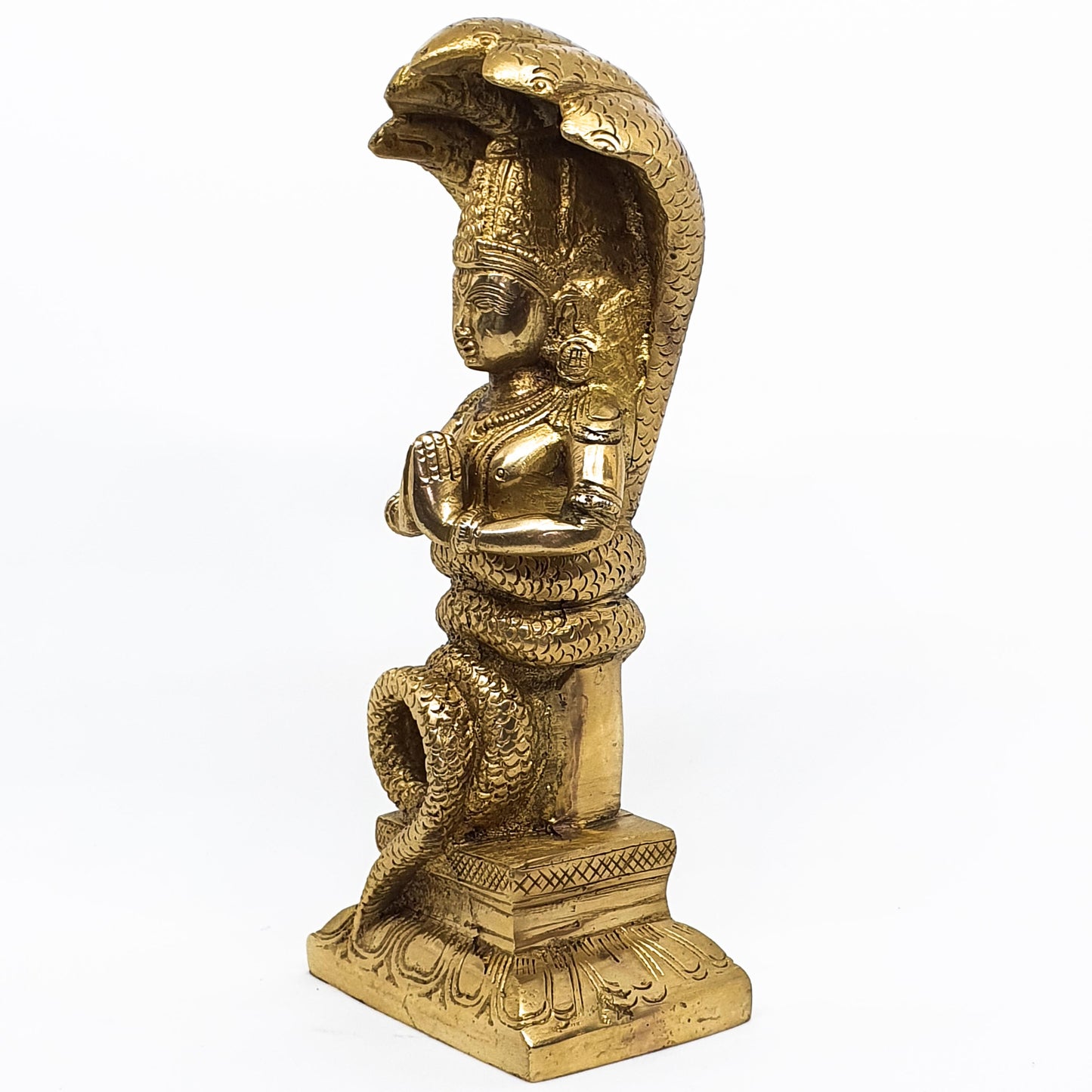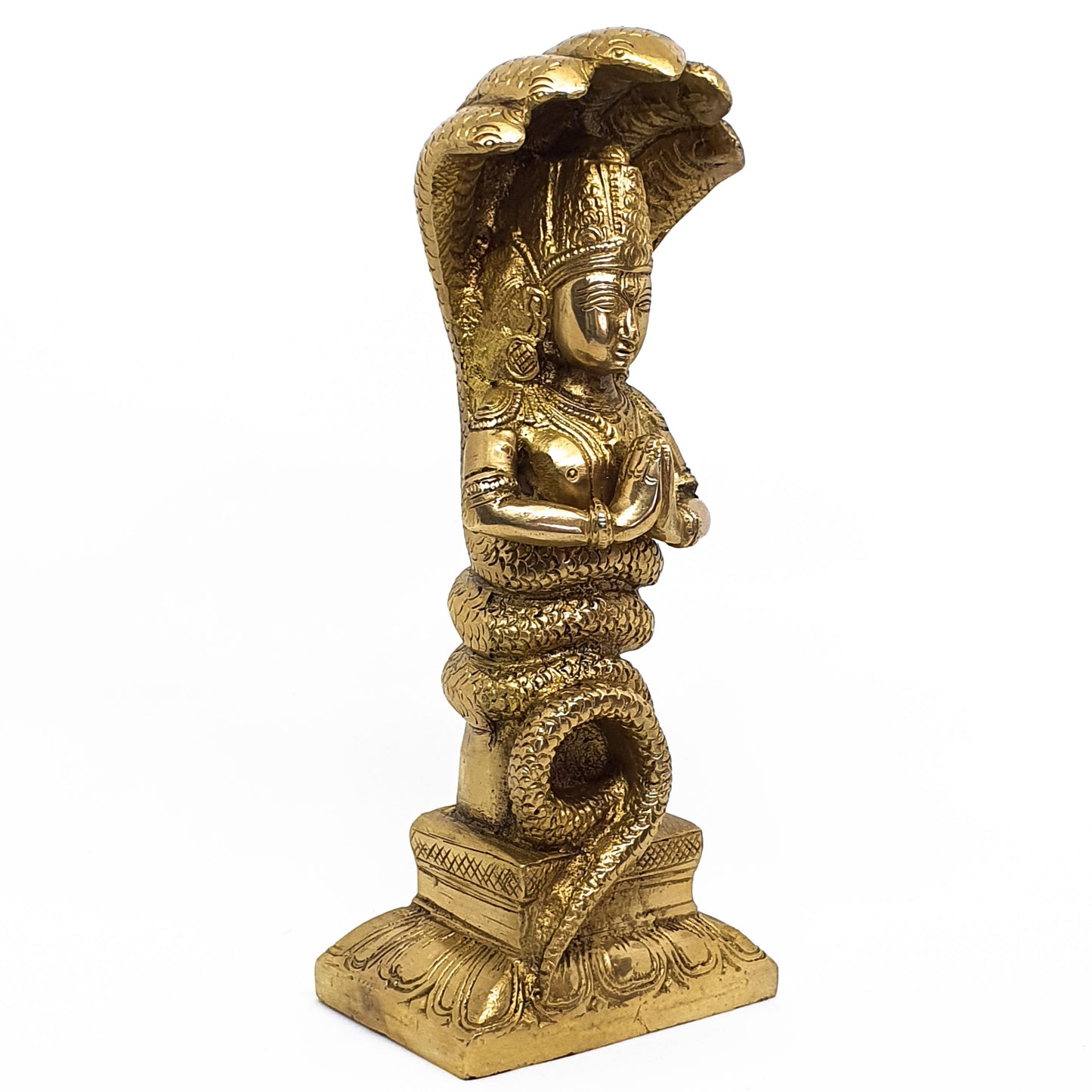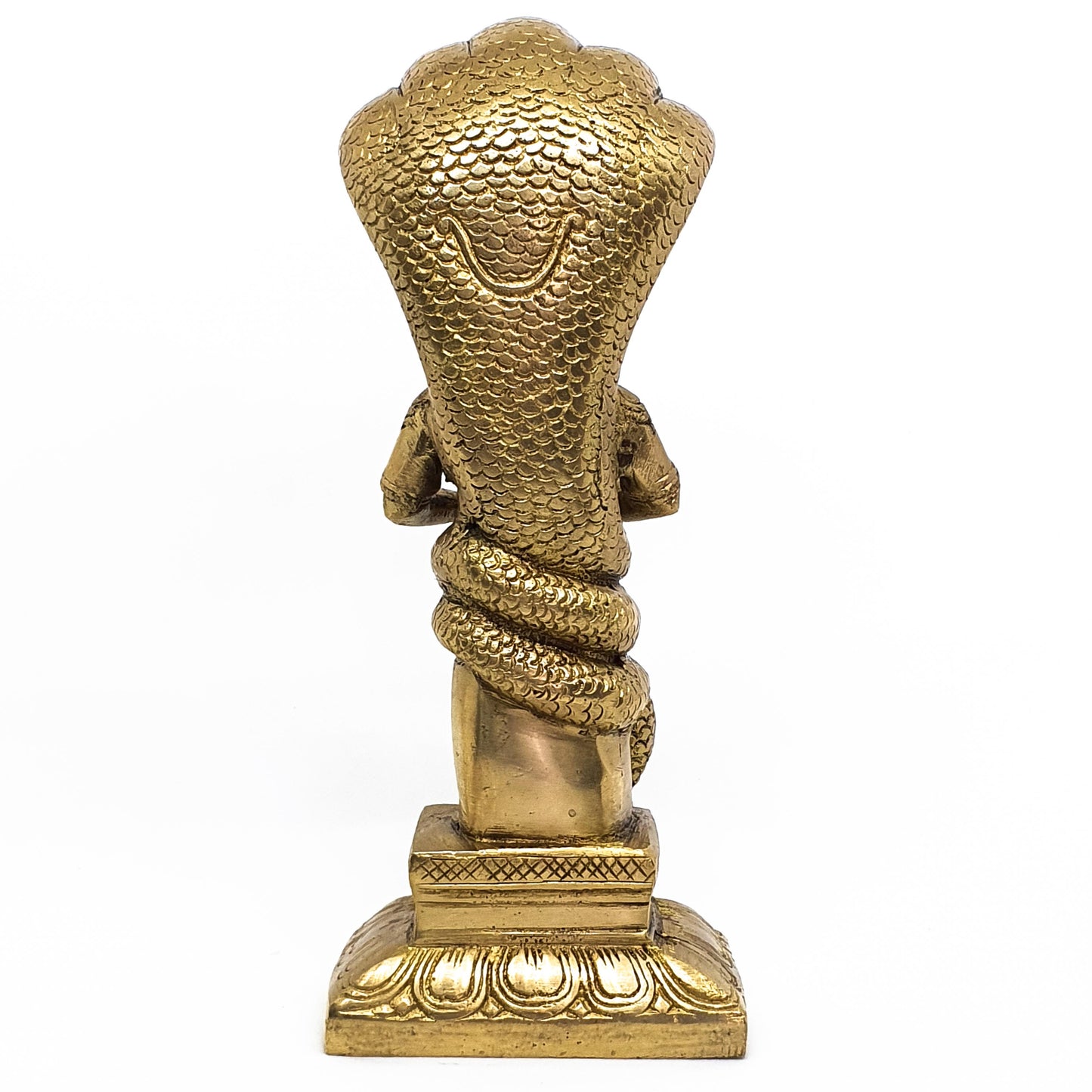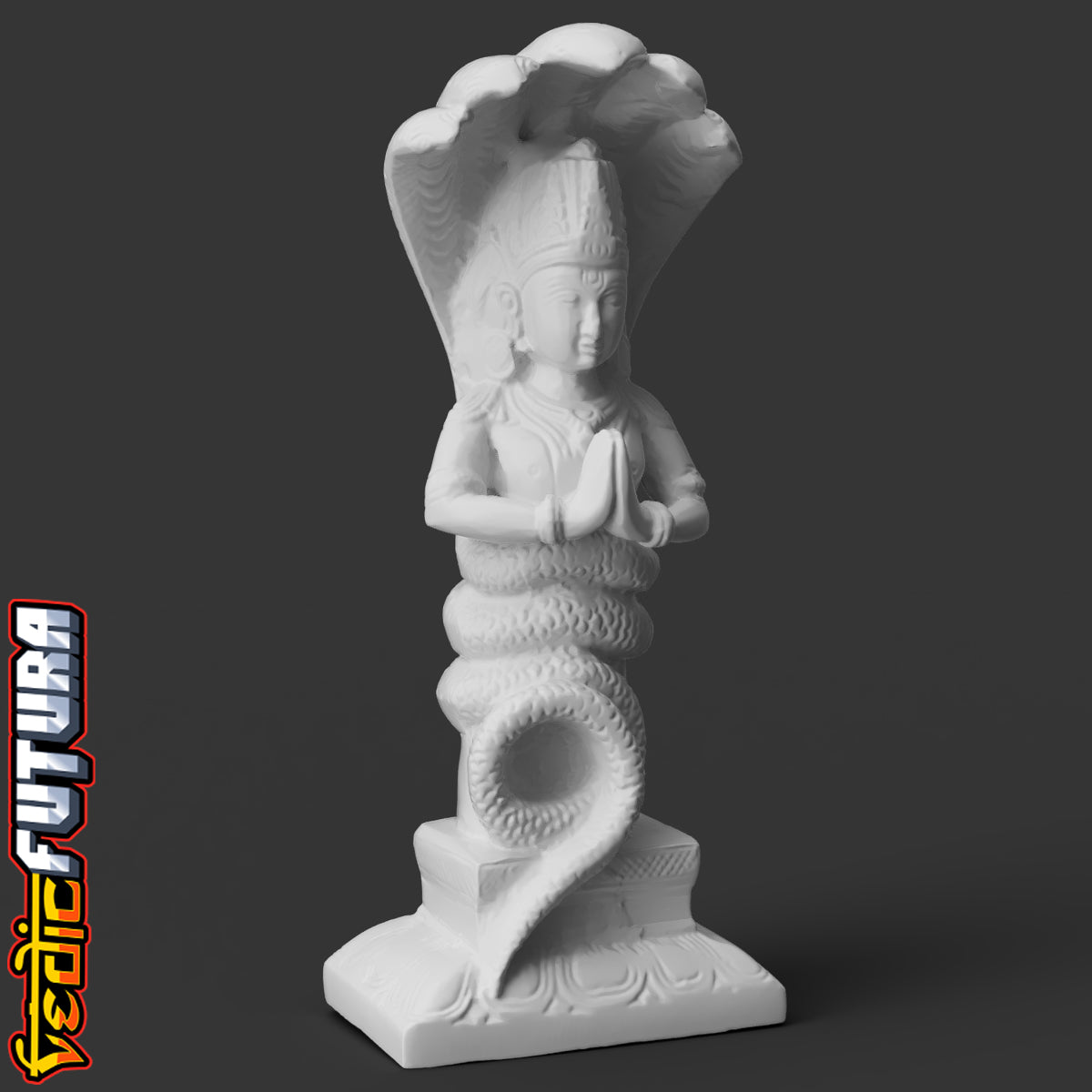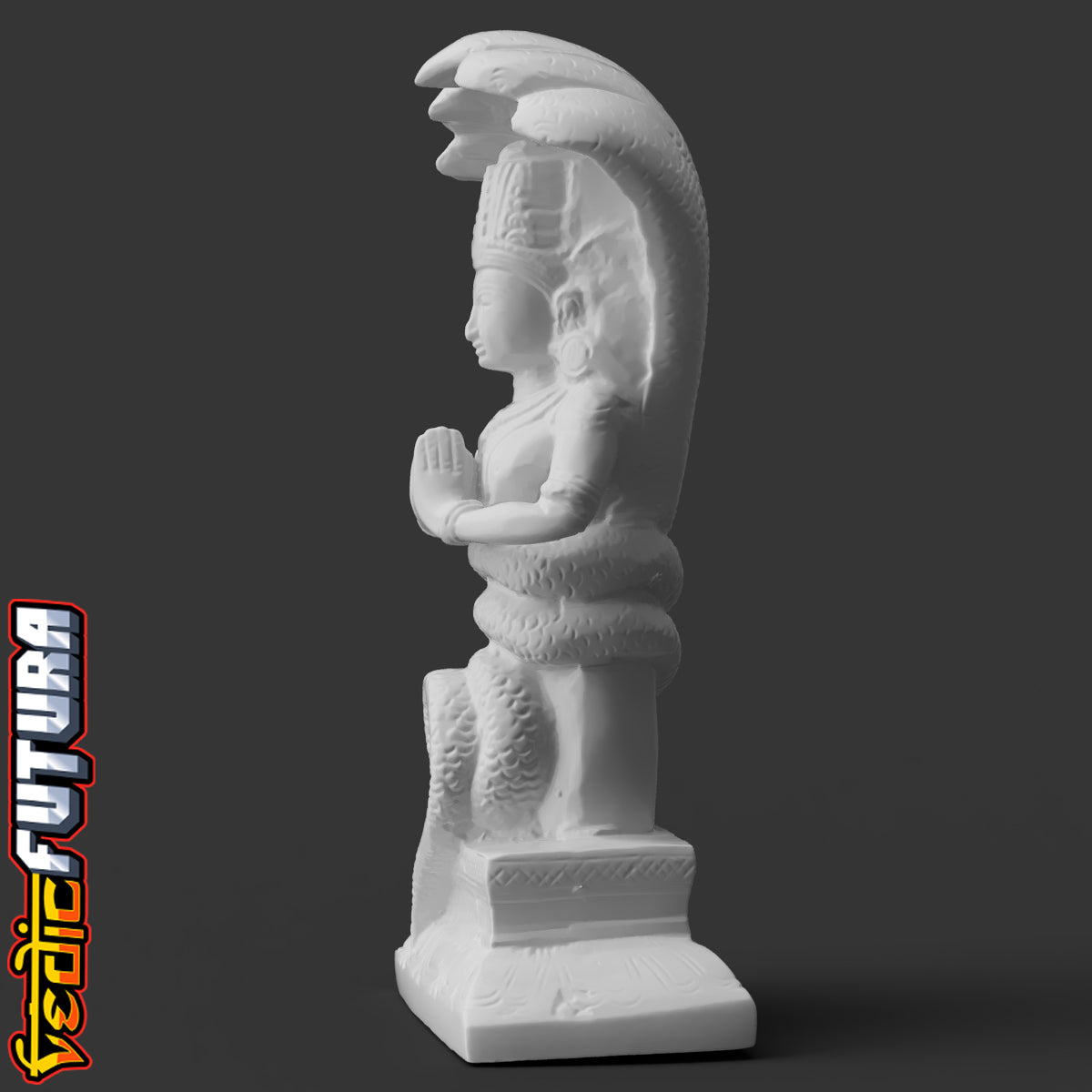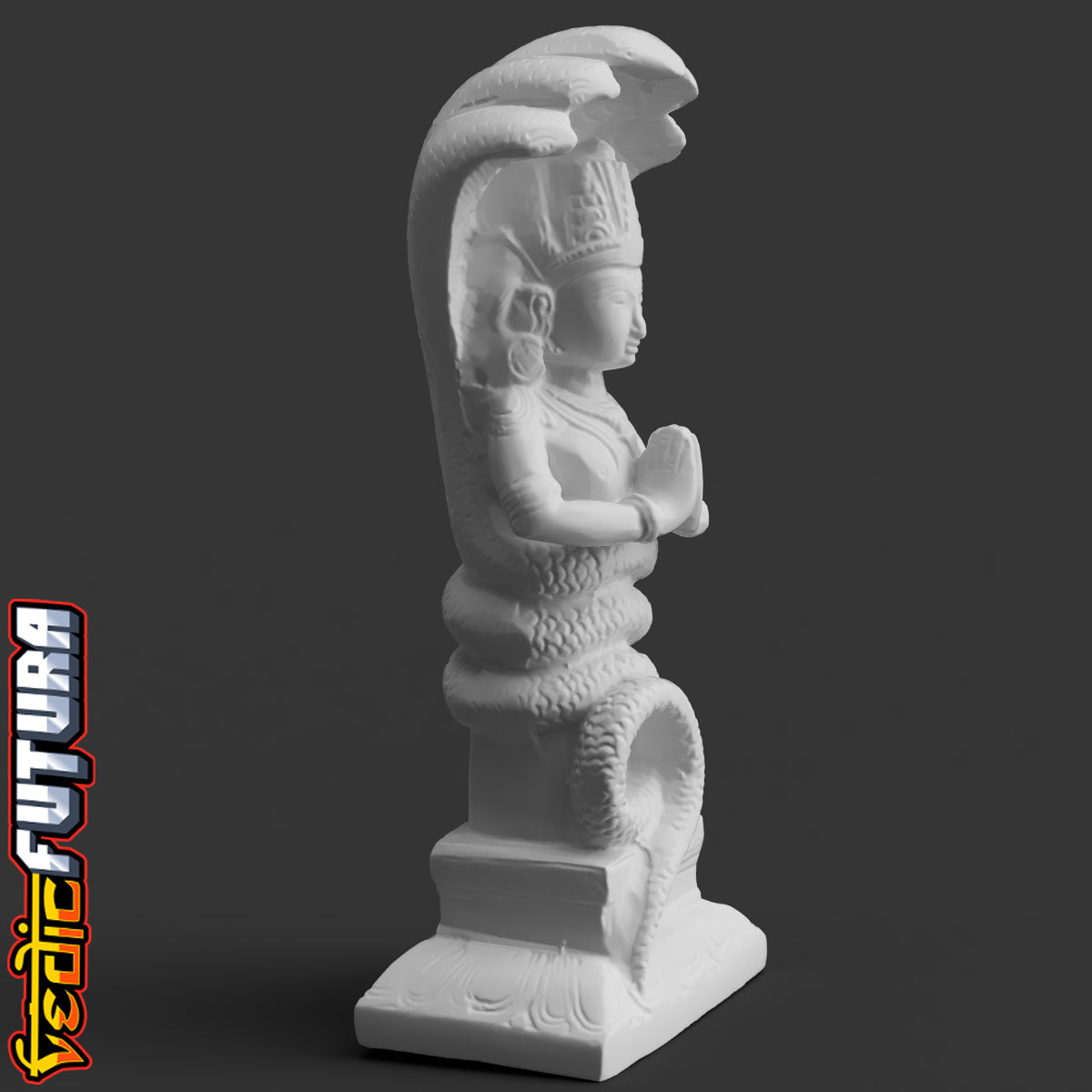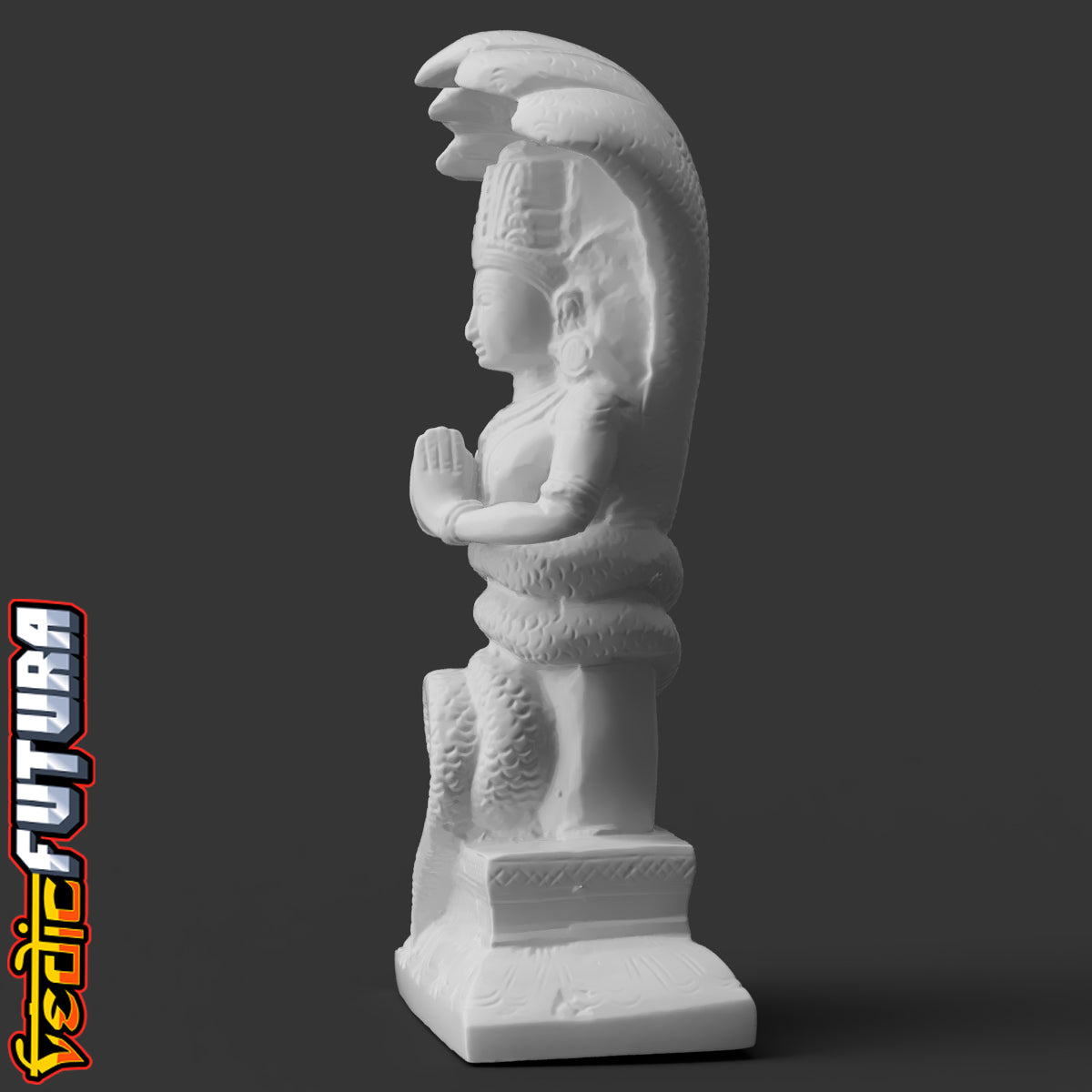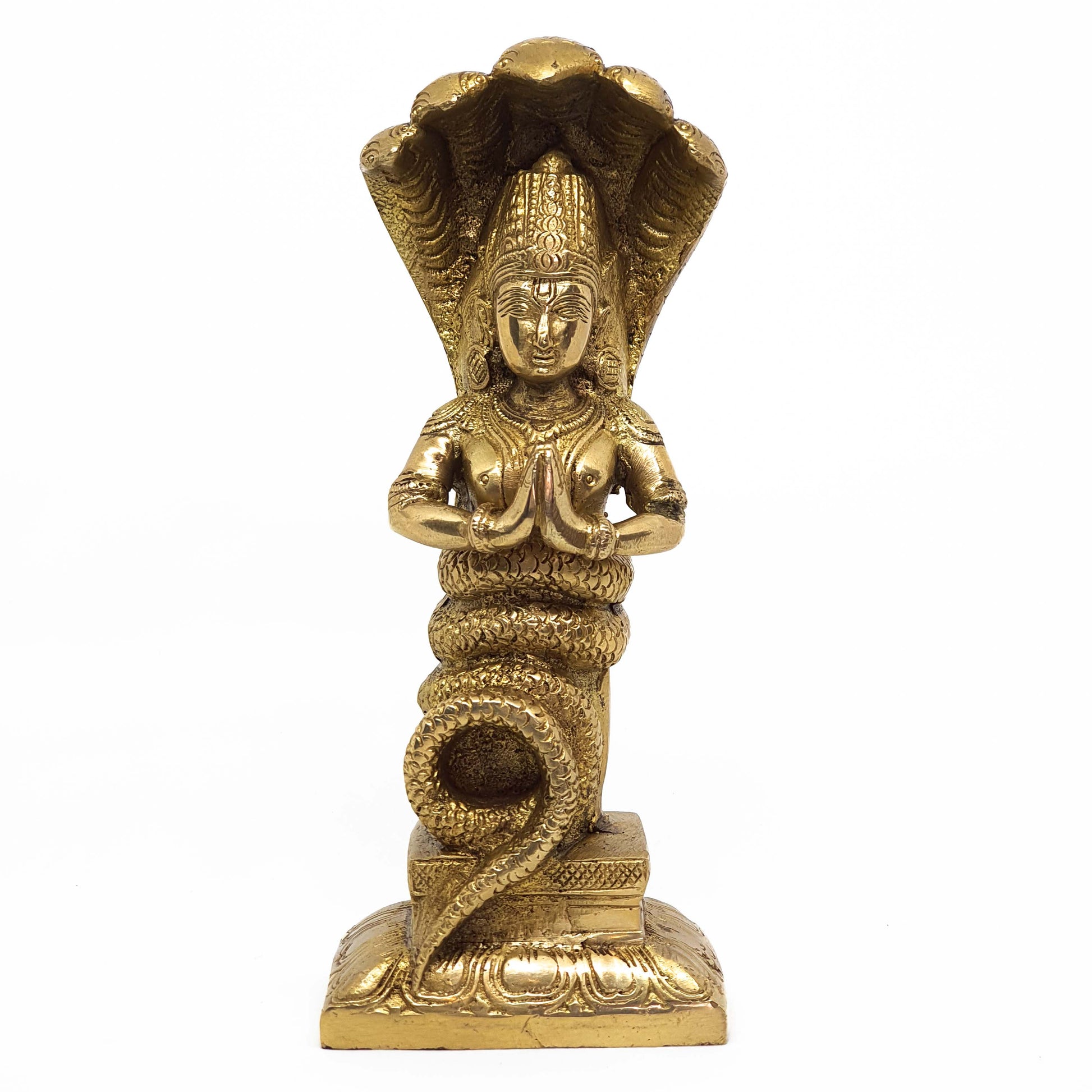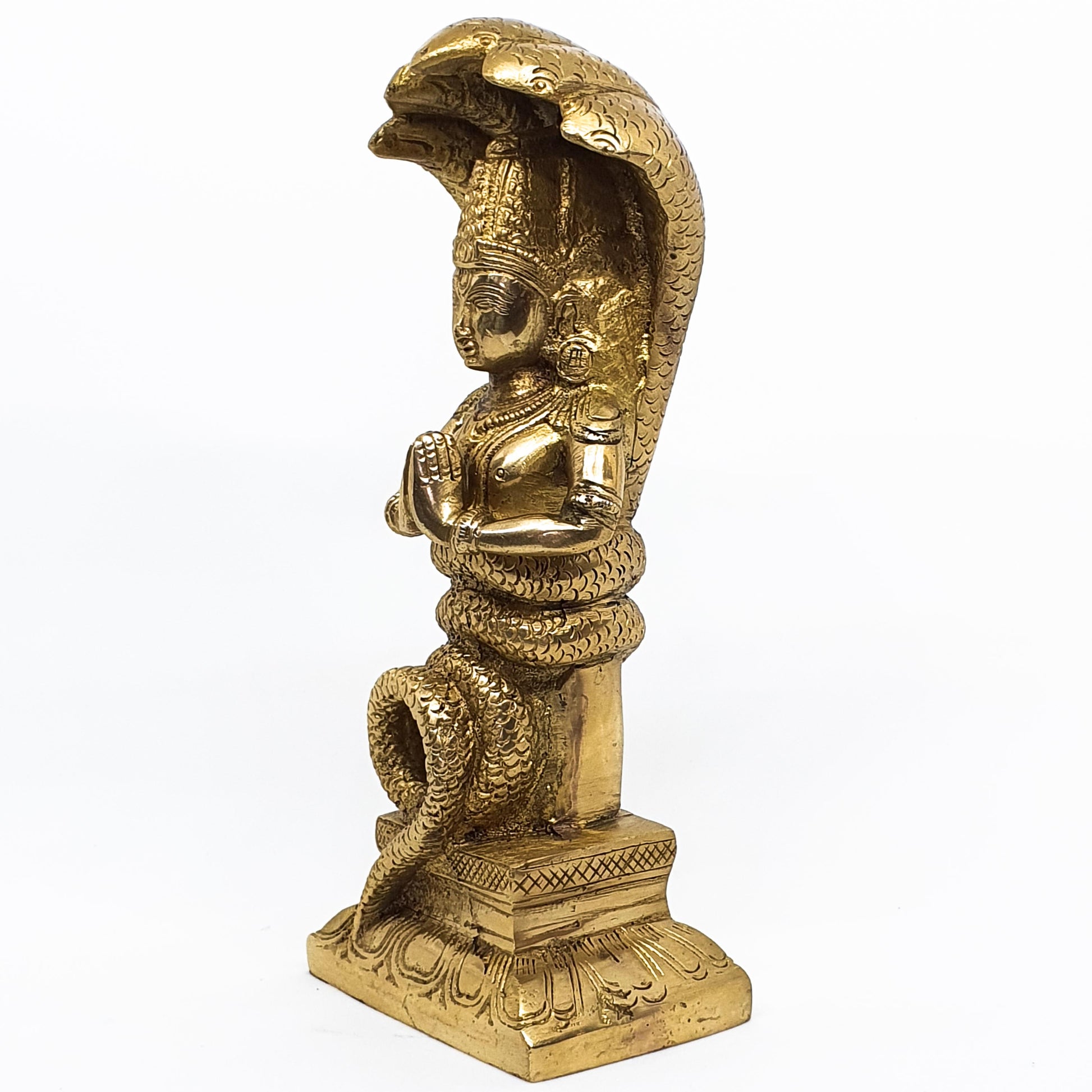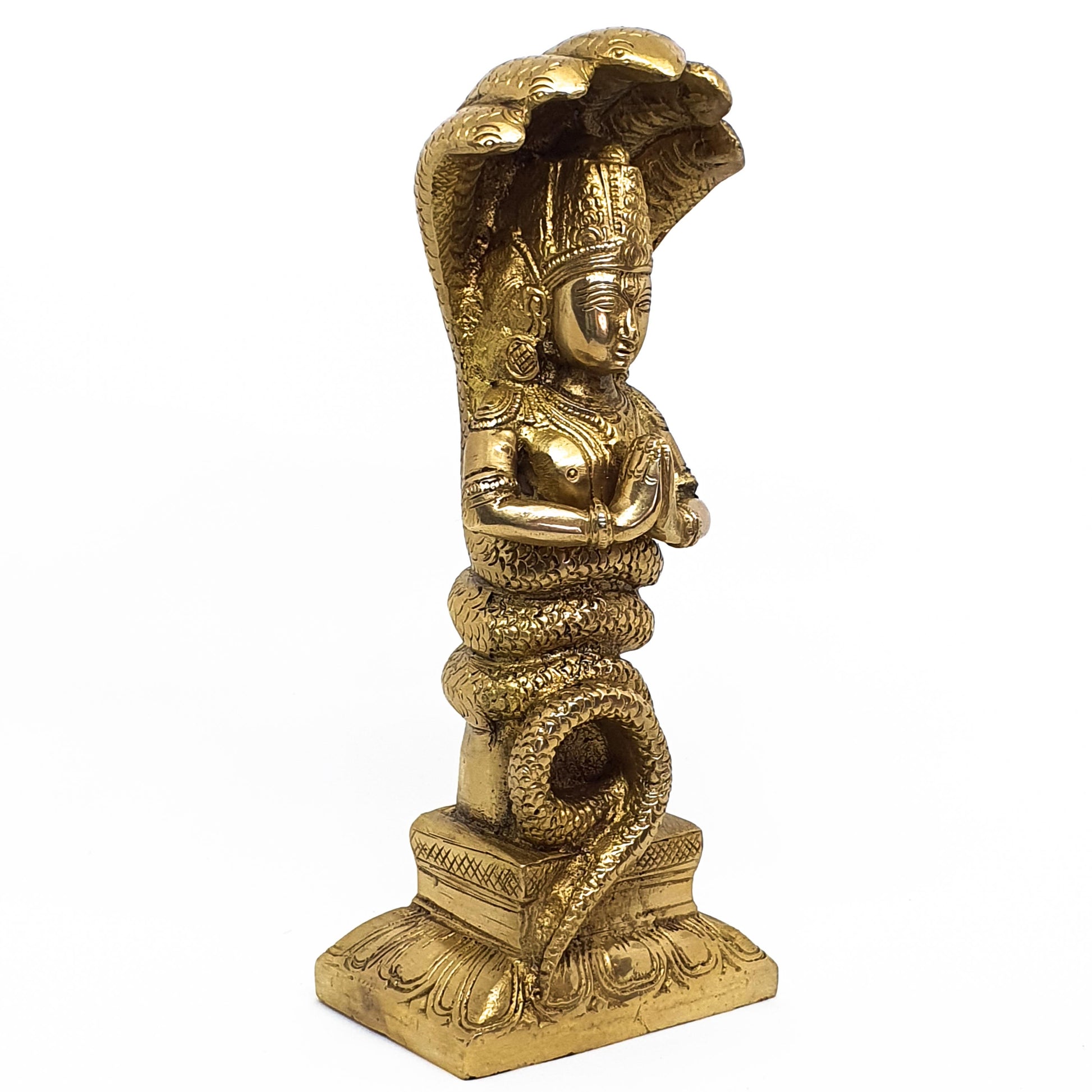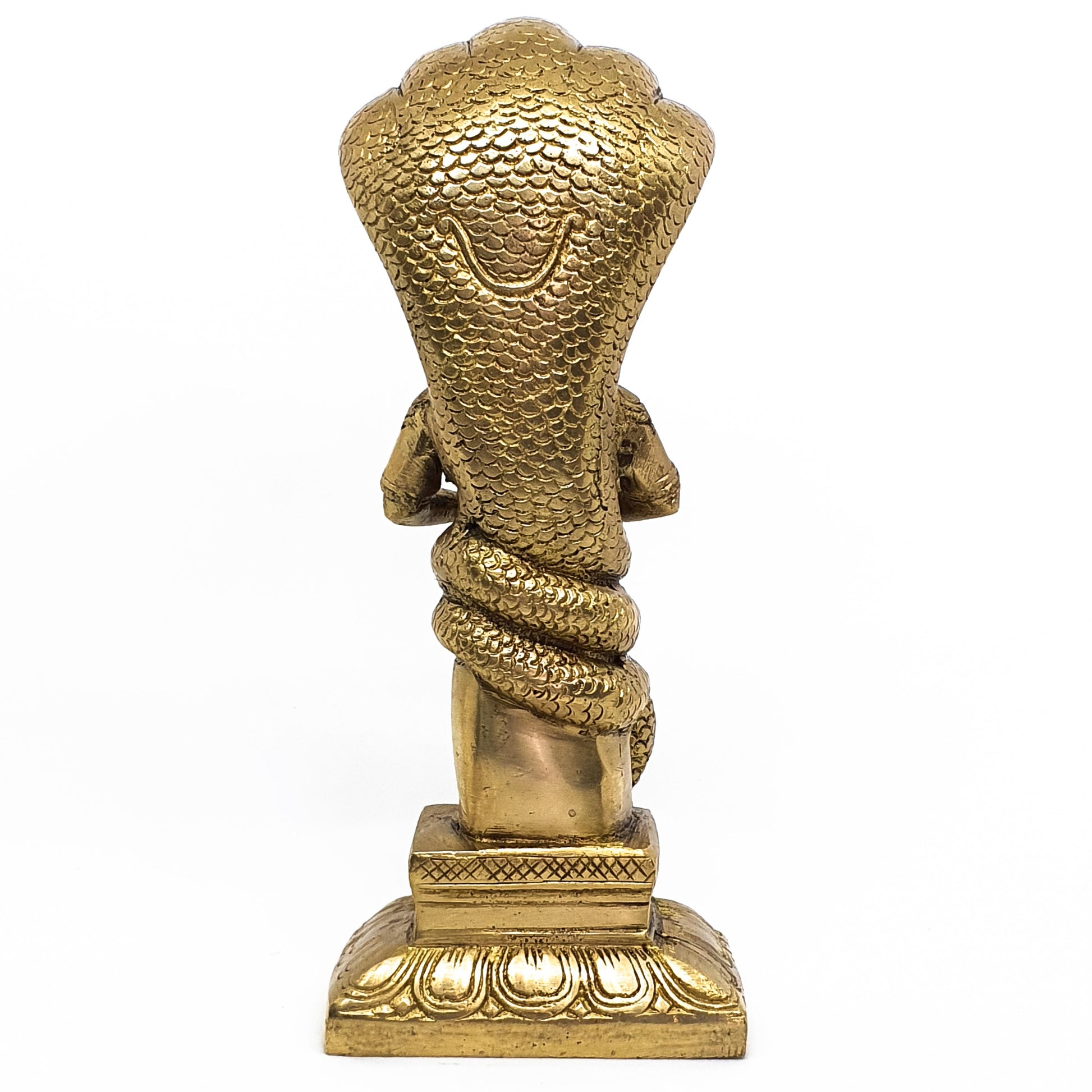Patanjali - Father of Yoga
Patanjali - Father of Yoga
Couldn't load pickup availability
Patañjali is believed to be an incarnation of Ādi S'esha, Vishnu’s serpent, who is the first ego-expansion of Vishnu, and he is the patron saint of Hindu dancers. The mythology behind Patanjali's half human half snake body is typical of Hindu lore. The story goes that Gonika a yogini, fearing that her life was coming to an end, prayed to the gods to send her a son to whom she could impart all her yogic knowledge. At the end of her meditation, she closed her eyes and scooped some water into her palms to offer it to Lord Surya, the sun god. When she opened her eyes, there, in her palms, was a child with the tail of a snake. Gonika was so surprised to see the child that she dropped him. She named the child Patanjali, pata meaning “fallen” or “falling,” and anjali meaning “prayer.” Gonika went on to pass down all of her yogic knowledge to him.
Today, the Yoga Sutras are the most commonly referenced text on yoga. Scholars consider the Yoga Sutras of Patañjali formulations as one of the foundations of classical Yoga philosophy of Hinduism. Patanjali is honoured with invocations and shrines in some modern schools of yoga, including Iyengar Yoga and Ashtanga Vinyasa Yoga. Yoga teacher training often includes "mandatory instruction" in the Yoga Sutra.
Take enough yoga classes and you’ll eventually hear one of your teachers quote from the Yoga Sutra, which is the guidebook of classical, or raja (royal), yoga. Written at least 1,700 years ago, it’s made up of 195 aphorisms (sutras), or words of wisdom. Based on their analyses of the language and the teaching of the sutras, modern scholars place Patanjali in the second or third century CE and ascribe the medical essays and grammar to various other “Patanjalis.”
During the twentieth century the Yoga Sutra became popular around the world, as the practice of Raja Yoga, as a means to improve physical health and harmonize the mind and body, spread. "Yoga" in traditional Hinduism involves inner contemplation, a rigorous system of meditation practice, ethics, metaphysics, and devotion to the one common soul, God, or Brahman.
Please Note: This is a digital 3D model (STL/3mf file) for 3D printing – not a physical object.
No physical product will be shipped.
After purchase, download links will be shown on your screen and sent to your email.
Please read the full website description and terms before purchasing.
